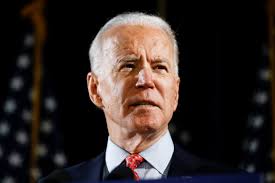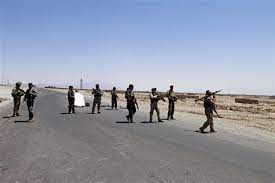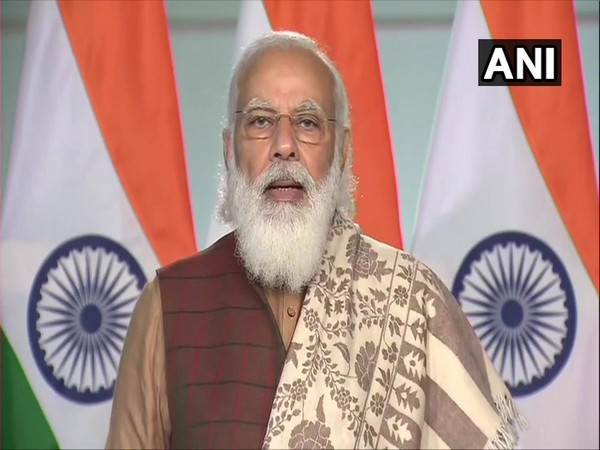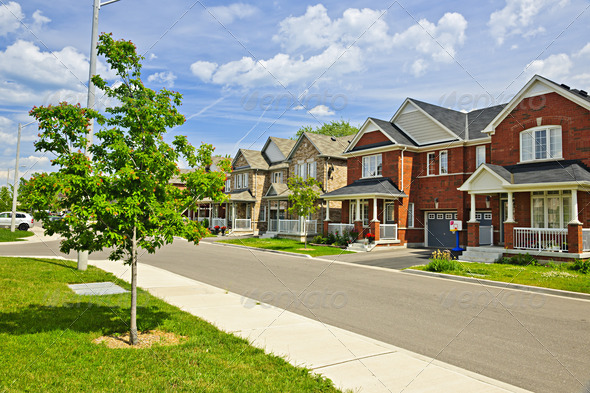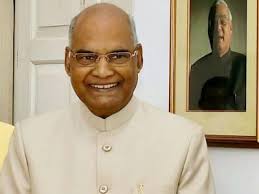
08/29/2021
New Delhi, Aug. 29: Indian President Ram Nath Kovind Sunday offered prayers to Ram Lalla, visiting the site where a Ram temple is being constructed in Ayodhya, a city which he said was nothing without the deity.
“Without Ram, Ayodhya is not Ayodhya. Ayodhya exists where there is Ram. Lord Ram resides permanently in this city, and hence in the true sense, this place is Ayodhya,” he said while inaugurating a Ramayan Conclave, shortly before visiting the temple construction site and offering his prayers.
The president was accompanied by his family members, Uttar Pradesh Governor Anandiben Patel, Union Minister of State for Railways and Textiles Darshana Vikram Jardosh, Chief Minister Yogi Adityanath, and his deputies Keshav Prasad Maurya and Dinesh Sharma.
They also offered their prayers to Ram Lalla amid chanting of slogans by priests at the makeshift temple.
A shawl and a miniature replica of the upcoming Ram temple were also presented to Kovind who interacted with the priests briefly and planted a sapling.
According to the Indian Media, Before he went there, Kovind, who is on his first visit to Ayodhya after the landmark 2019 Supreme Court verdict paved the way for the construction of the temple, also offered prayers at the Hanumangarhi shrine, about 2 km away.
The president was presented with a pink-coloured turban at the Hanumangarhi temple.
Earlier in the day, the president reached Ayodhya by a special train from Lucknow on the last day of his four-day visit to Uttar Pradesh.
Speaking after opening the Ramayana Conclave and laying foundation stones of various projects of the Department of Culture and Tourism, the president said, “We should try to see Ram and Sita in everyone. Ram belongs to all, and Ram is in all.”
Apparently referring to the word ‘Ram’ in his name, Kovind said, “I feel that when my family members named me (Ram Nath Kovind), they were possibly having the feeling of respect and affection towards Ram Katha and Lord Ram, which is seen in the common public.”
Elaborating further on Ayodhya, the president said, “The literal meaning of Ayodhya is the one who is impossible to wage a war against. Owing to the courage and power of Raghuvanshi kings Raghu, Dileep, Ajj, Dashrath and Ram, their capital was considered unconquerable. Therefore, the name of this city as “Ayodhya’ will always remain relevant.”
Highlighting the love of Lord Ram towards tribals, he said, “During his days of exile, Lord Ram did not call the armies of Ayodhya and Mithila to fight the war. He gathered the Khols, Bheels, Vaanars and formed his army. In his campaign, he included ‘Jatayu (vulture)’. He strengthened love and friendship with the tribals.”
Paying respect to the Ramcharitmanas, he said it instills hope, generates inspiration and spreads the light of knowledge.
“Ram Katha is enacted in many countries of the world. The Ramlila of Bali island of Indonesia is famous. Non-resident Indians have kept the Ram Katha and Ramlila alive in many countries including the Maldives, Mauritius, Trinidad and Tobago, Nepal, Cambodia and Suriname,” the president said.
He also referred to Ayutthaya, a city in Thailand.
“In public life, Mahatma Gandhi had imbibed the ideals of Lord Ram. Gandhiji in his conceptualisation of an ideal India, had named it as ‘Ramrajya’. The name of Lord Ram was very important for Mahatma Gandhi,” Kovind said.
The president said the projects related to the Ramayan circuit being developed under the ‘Swadesh Darshan Scheme’ of the Centre which were inaugurated today, would provide various amenities to tourists and devotees.
He noted the Tulsi Smarak Bhawan project would help in the ongoing global research on Ramayana and Ram Katha.
He also noted that an extensive encyclopedia is being prepared under the aegis of Ayodhya Shodh Sansthan which would be a collection of material related to Ramayana and Indian culture available across the world.
He lauded the UP government for making efforts to take the Ramayans to the masses through art and culture by organising Ramayan Conclave.
